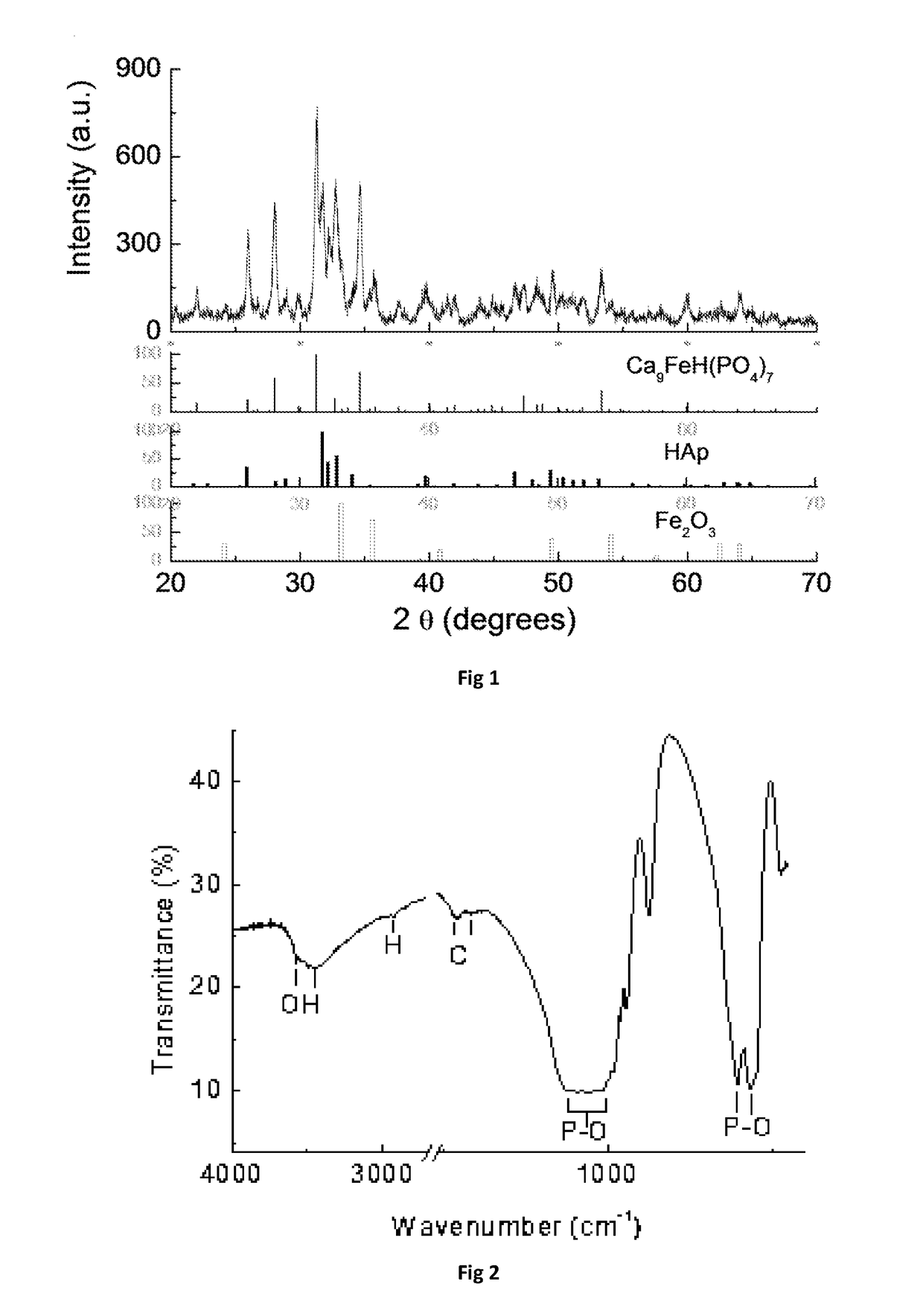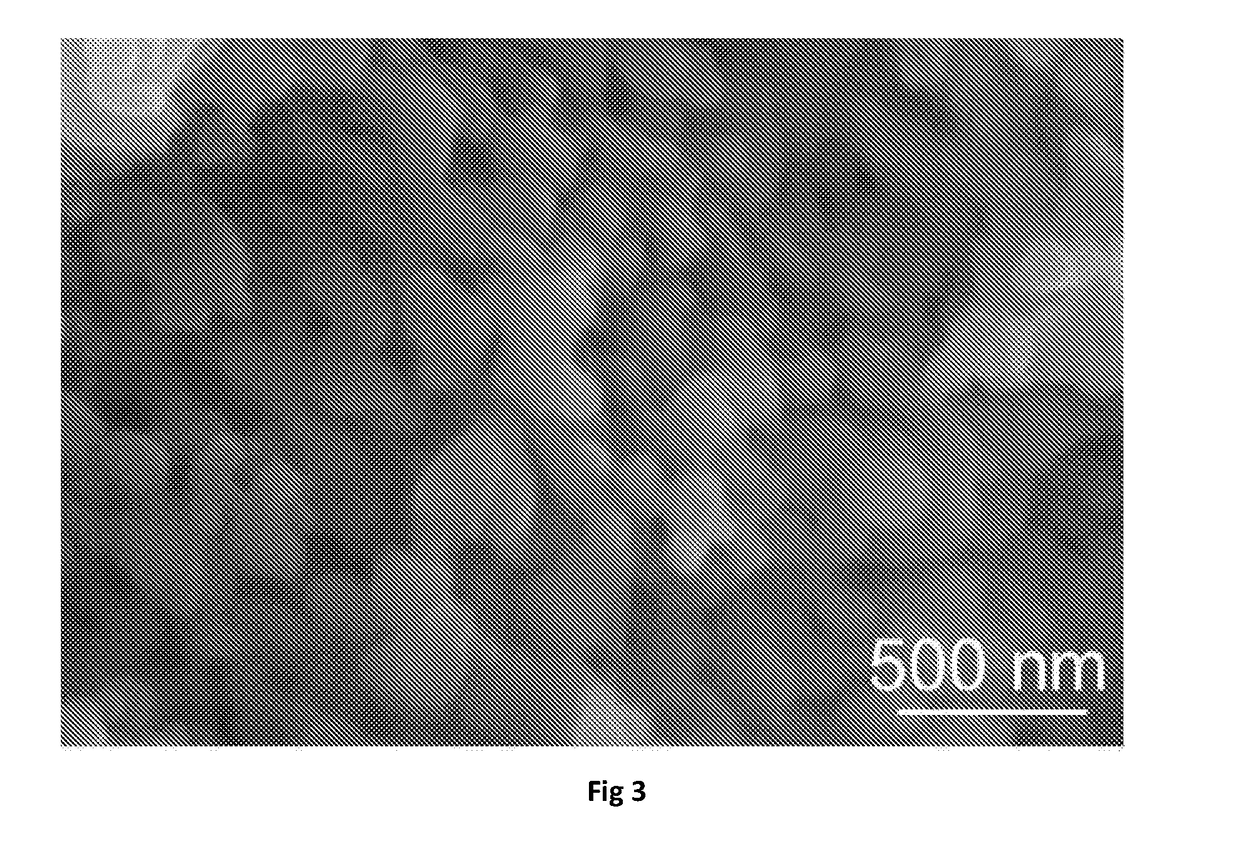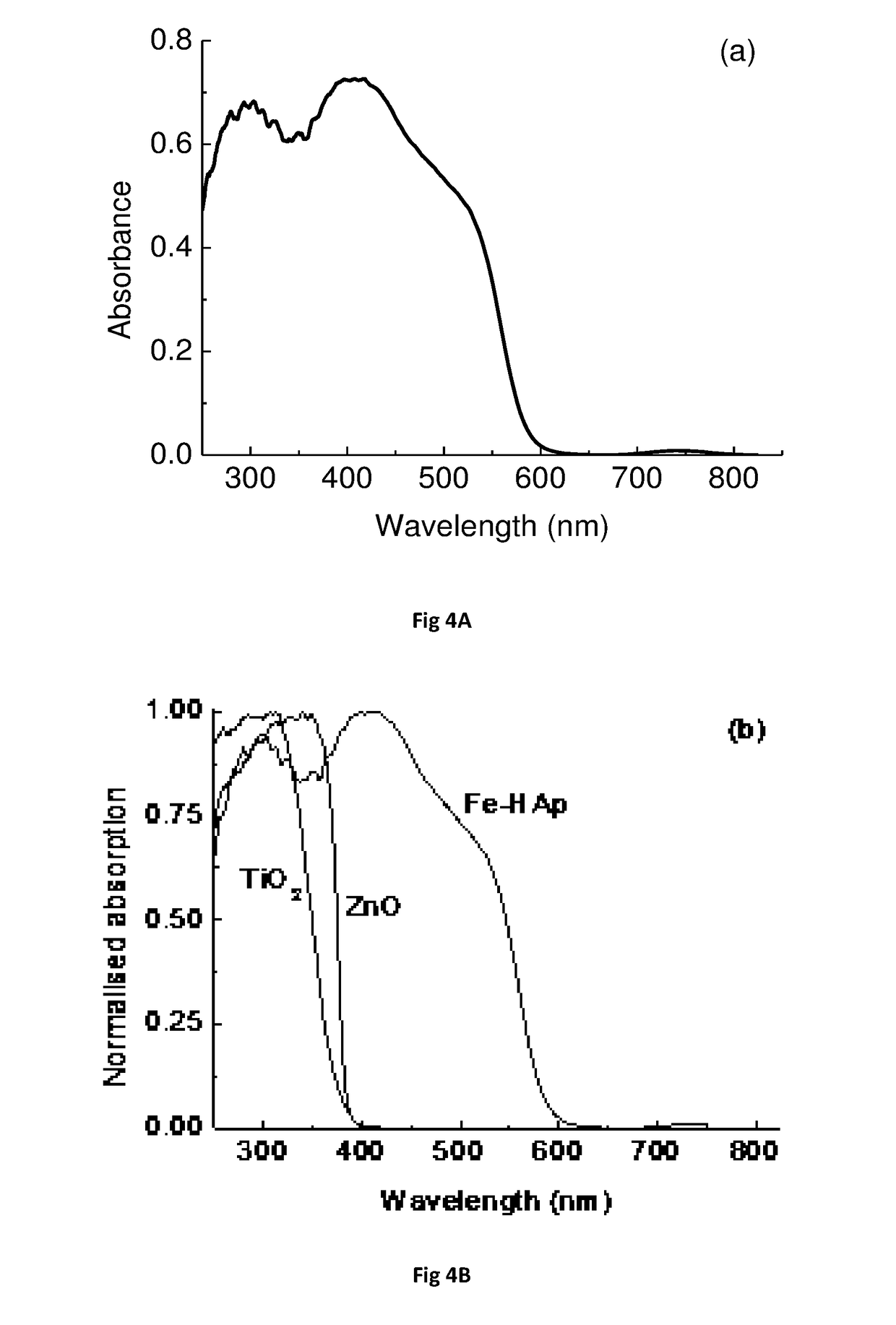Uv-filters, method of producing the same and their use in compositions, in particular sunscreens
- Summary
- Abstract
- Description
- Claims
- Application Information
AI Technical Summary
Benefits of technology
Problems solved by technology
Method used
Image
Examples
Embodiment Construction
[0042]In the present disclosure, an iron-doped HAp-based (Hydroxyapatite) compound, containing both Fe ions substituted into the HAp structure and iron oxide in hematite (α-Fe2O3) form, showed good absorption in the whole UV range and did not form radicals when irradiated. Because of its absorption properties it would be classified as 5 star protection according to the Boots UVA star rating system. The cream is also photostable, and does not cause irritation or erythema formation when in contact with human skin.
[0043]In an embodiment, the powder was prepared, in particular cod fish bones were washed and stored at −20° C. Prior to use, they were defrosted and dried at 45° C. overnight.
[0044]To prepare the samples, a weighed amount of bones was placed in an iron (II) chloride (FeCl2) solution. FeCl2 concentration was 5 times higher than the HAp concentration, calculated assuming a 70% HAp content in the fish bones. The pH of the solution, initially acidic (2.9-3), was adjusted to 8.0 ...
PUM
 Login to View More
Login to View More Abstract
Description
Claims
Application Information
 Login to View More
Login to View More - R&D
- Intellectual Property
- Life Sciences
- Materials
- Tech Scout
- Unparalleled Data Quality
- Higher Quality Content
- 60% Fewer Hallucinations
Browse by: Latest US Patents, China's latest patents, Technical Efficacy Thesaurus, Application Domain, Technology Topic, Popular Technical Reports.
© 2025 PatSnap. All rights reserved.Legal|Privacy policy|Modern Slavery Act Transparency Statement|Sitemap|About US| Contact US: help@patsnap.com



